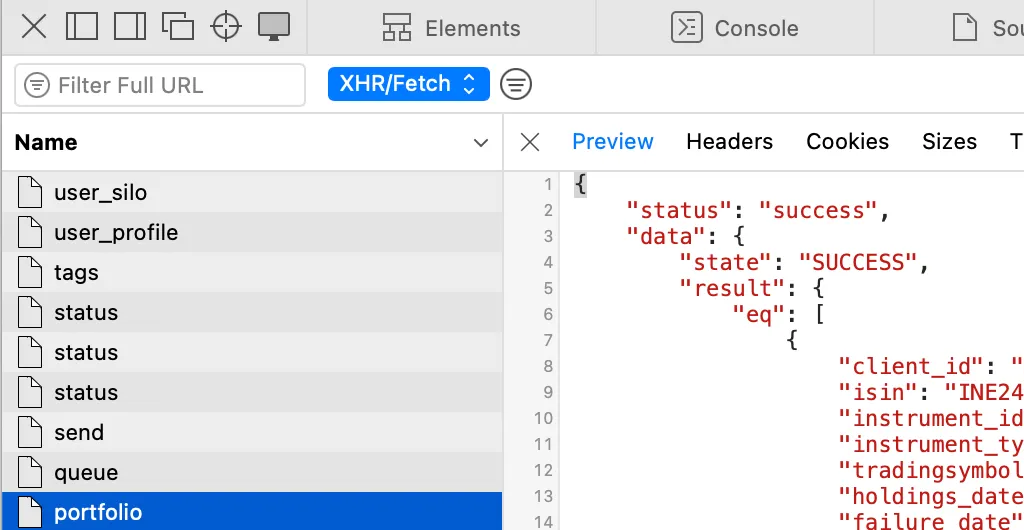How to Gift Stocks to Family Members on Zerodha (and Avoid Losing Your Original Buy Price)
I recently decided to move to the U.S. and wanted to simplify my finances — that meant parting ways with my Indian equity holdings. Instead of selling them off, I decided to gift my stocks to my mom using Zerodha’s gifting feature.
If you’re in a similar situation, this guide walks you through how to gift stocks via Zerodha, and more importantly, how to preserve your original buy prices (so you don’t lose track of your actual capital gains in the process).
Step 1: Open a Demat Account for the Recipient
First things first — your family member (the recipient) will need a Zerodha account.
You can start the process here:
👉 https://zerodha.com/open-account/
Once the account is active, you can initiate the gifting process.
Step 2: Gift Stocks via Zerodha Console
Go to Zerodha’s gifting page:
👉 https://console.zerodha.com/gift
The process is quite simple — select the stocks you wish to gift, verify via a couple of CDSL OTPs, and that’s it!
Your stocks are now transferred.
Step 3: The Hidden Catch — Your Buy Price Gets Reset
Here’s where things get tricky.
Once the gift is processed, Zerodha resets the buy price for the recipient to the closing price on the day of transfer — not your original acquisition price.
This means the P&L (Profit & Loss) and LTCG/STCG (Long/Short Term Capital Gains) shown in the Console will be incorrect.
I reached out to Zerodha Support about this, and here’s what they said:
“When stocks are gifted, the closing price of the stock on the date of transfer is considered the exit price for the sender and the entry price for the recipient.
For income tax purposes, however, the acquisition price may be interpreted differently when filing returns. Please consult your CA.”
You can also read their official article here.
Step 4: Get the Original Buy Breakdown
To ensure you don’t lose your true acquisition data, it’s a good idea to save your current holdings breakdown before initiating the gift.
Zerodha’s Console displays this breakdown under:
👉 https://console.zerodha.com/portfolio/holdings
You’ll see something like this:

Click “View breakdown” to get details of all your buy transactions for a stock:

Step 5: Export Your Holding Breakdowns
Unfortunately, Zerodha’s public API doesn’t expose this breakdown.
But, you can access it from the network inspector in your browser.
- Open the holdings page on Console.
- Open Developer Tools → Network tab.
- Filter for
/portfolio. - Copy the JSON response (it contains your equity and mutual fund holdings).

You can then parse it with the following Python snippet:
import json
import pandas as pd
data_json = json.loads(data_json)
data_equity = pd.DataFrame(data_json['data']['result']['eq'])
data_equity["type"] = "EQ"
data_mf = pd.DataFrame(data_json['data']['result']['mf'])
data_mf["type"] = "MF"
data_all = pd.concat([data_equity, data_mf])
Step 6: Fetch Each Stock’s Purchase Breakdown
Now, when you click “View breakdown,” a request is sent to Zerodha’s backend API.
You can replicate that API call with Python to download all breakdowns programmatically.
Here’s the function you can use:
import requests
def get_holding_breakdown(instrument_id: str, segment: str):
"""
Fetch holdings breakdown for a given instrument_id from Zerodha Console.
"""
url = "https://console.zerodha.com/api/reports/holdings/breakdown"
params = {
"instrument_id": instrument_id,
"segment": segment
}
headers = {
"accept": "application/json, text/plain, */*",
"referer": "https://console.zerodha.com/",
"user-agent": "Mozilla/5.0 (Macintosh; Intel Mac OS X 10_15_7)",
"x-csrftoken": "<ADD THIS HERE from your Network call>"
}
cookies = {
"session": "<ADD THIS HERE from your Network call>",
"public_token": "<ADD THIS HERE from your Network call>"
}
response = requests.get(url, headers=headers, cookies=cookies, params=params)
if response.status_code == 200:
return response.json()['data']['result']
else:
print(f"Error {response.status_code}: {response.text}")
return None
Then apply this function to all your holdings:
breakdowns = data_all.apply(lambda x: get_holding_breakdown(x["instrument_id"], x["type"]), axis=1)
data_all["breakdowns"] = breakdowns
data_all.to_csv("2025_10_07_all_equity_breakdown.csv")
This will give you a comprehensive CSV file containing every stock’s purchase breakdown — a lifesaver for accurate tax reporting later.
Step 7: Restore Buy Prices in the Gifted Account
Once the transfer is complete, you can ask Zerodha Support to reset the buy prices in the recipient’s account.
You can then use your exported CSV as the source of truth for updating their trade history manually (if needed).
(This is a cumbersome
TL;DR
| Step | Action | Link |
|---|---|---|
| 1 | Open family member’s Zerodha account | zerodha.com/open-account |
| 2 | Gift your stocks | console.zerodha.com/gift |
| 3 | Save your holdings breakdown | console.zerodha.com/portfolio/holdings |
| 4 | Export buy breakdowns | Use Python script above |
| 5 | Ask Zerodha to reset buy prices post-transfer | — |
Final Thoughts
Zerodha’s gifting feature makes transferring stocks to loved ones straightforward — but the buy price reset issue can cause trouble when filing taxes or tracking returns.
By exporting your breakdowns beforehand, you can ensure your family members’ holdings reflect the true cost basis. It’s a bit of extra effort — but it keeps your financial record-keeping clean and audit-proof.